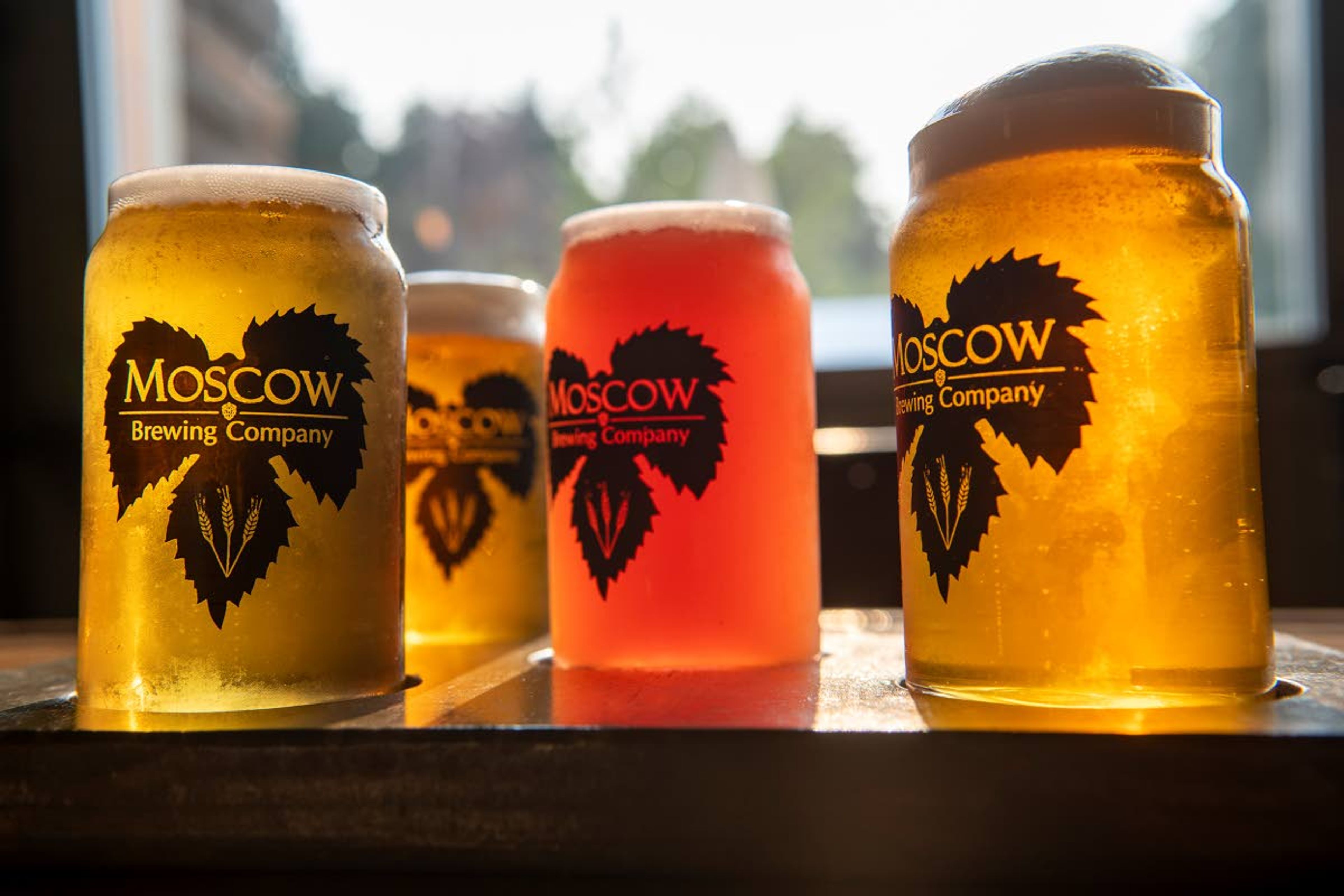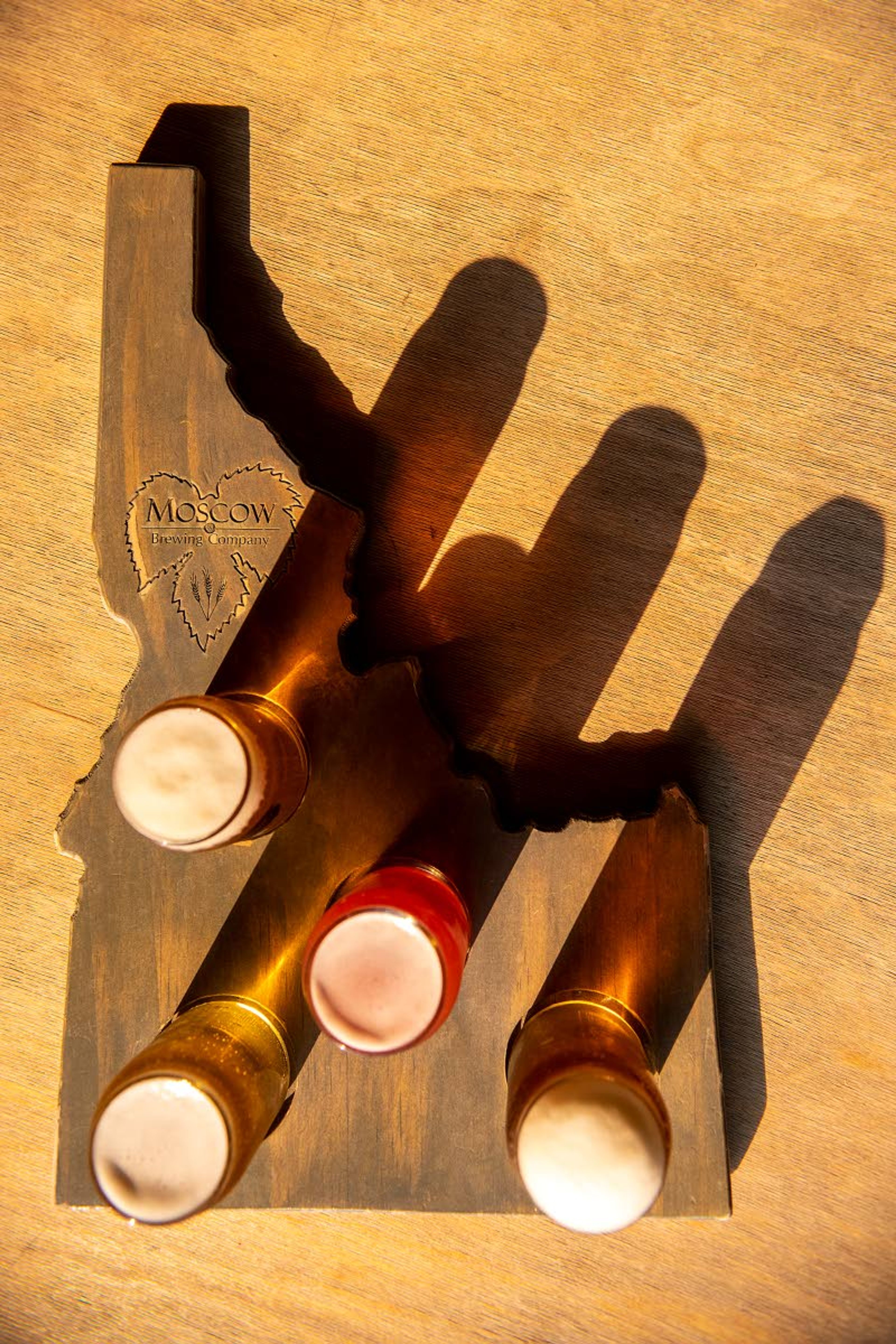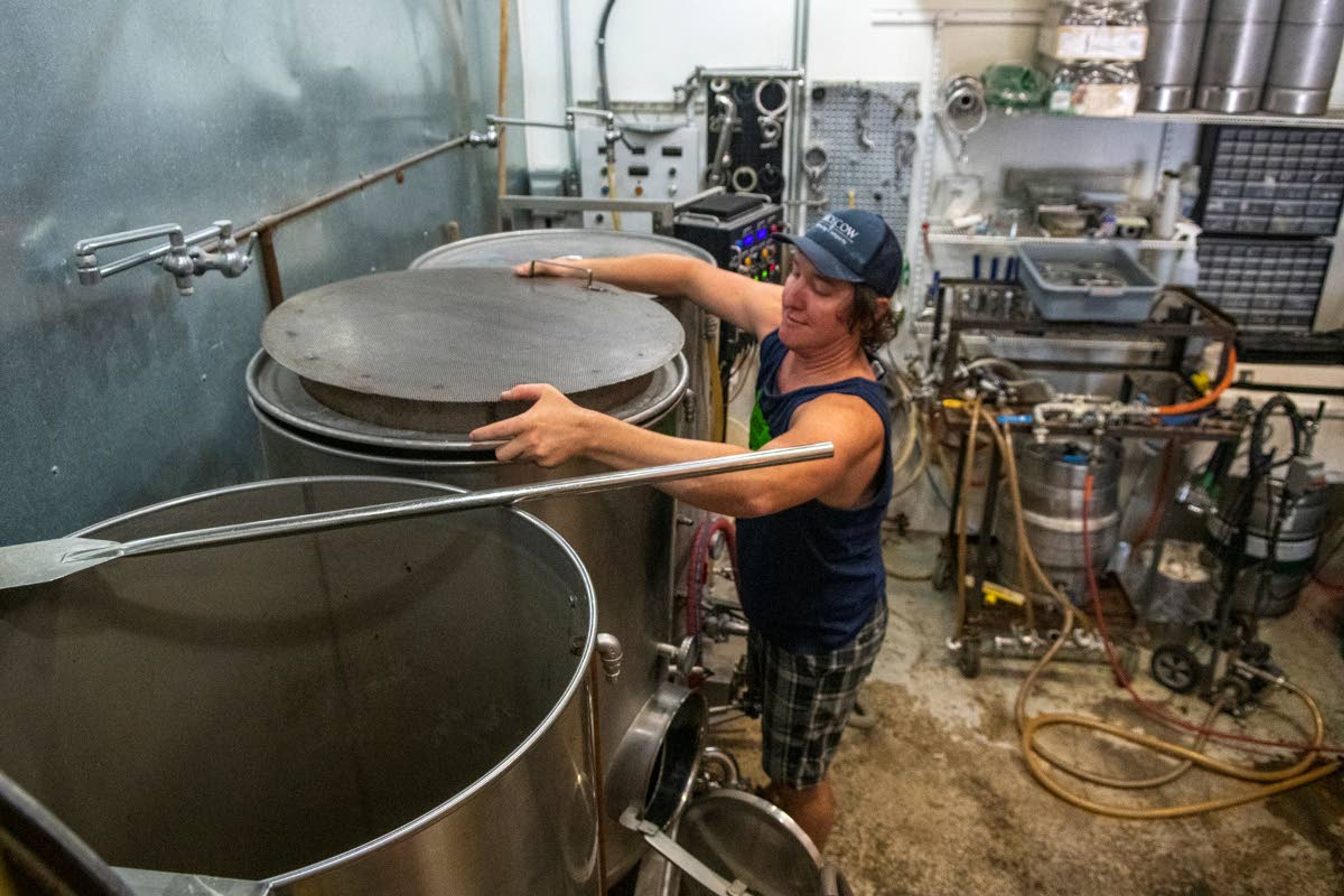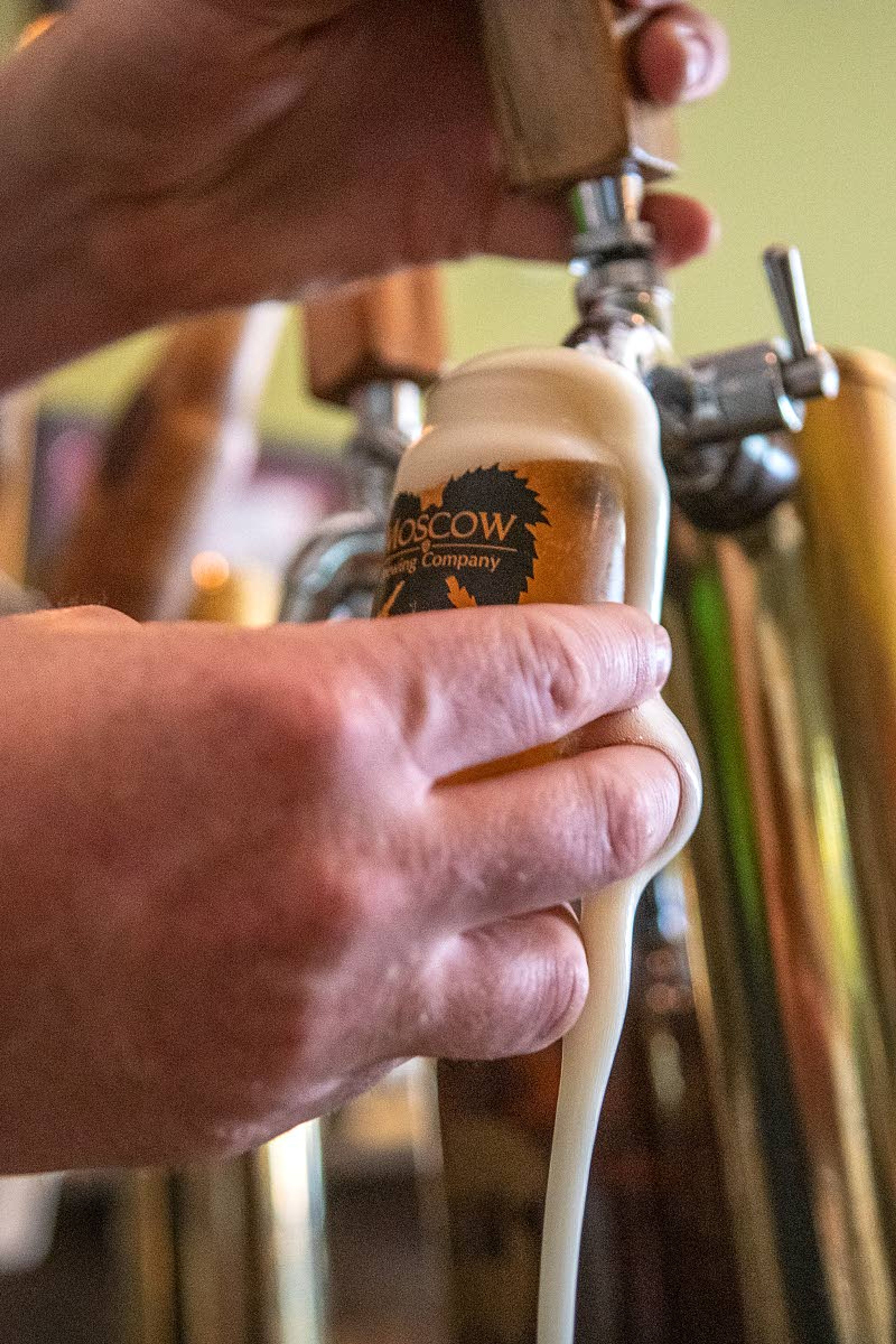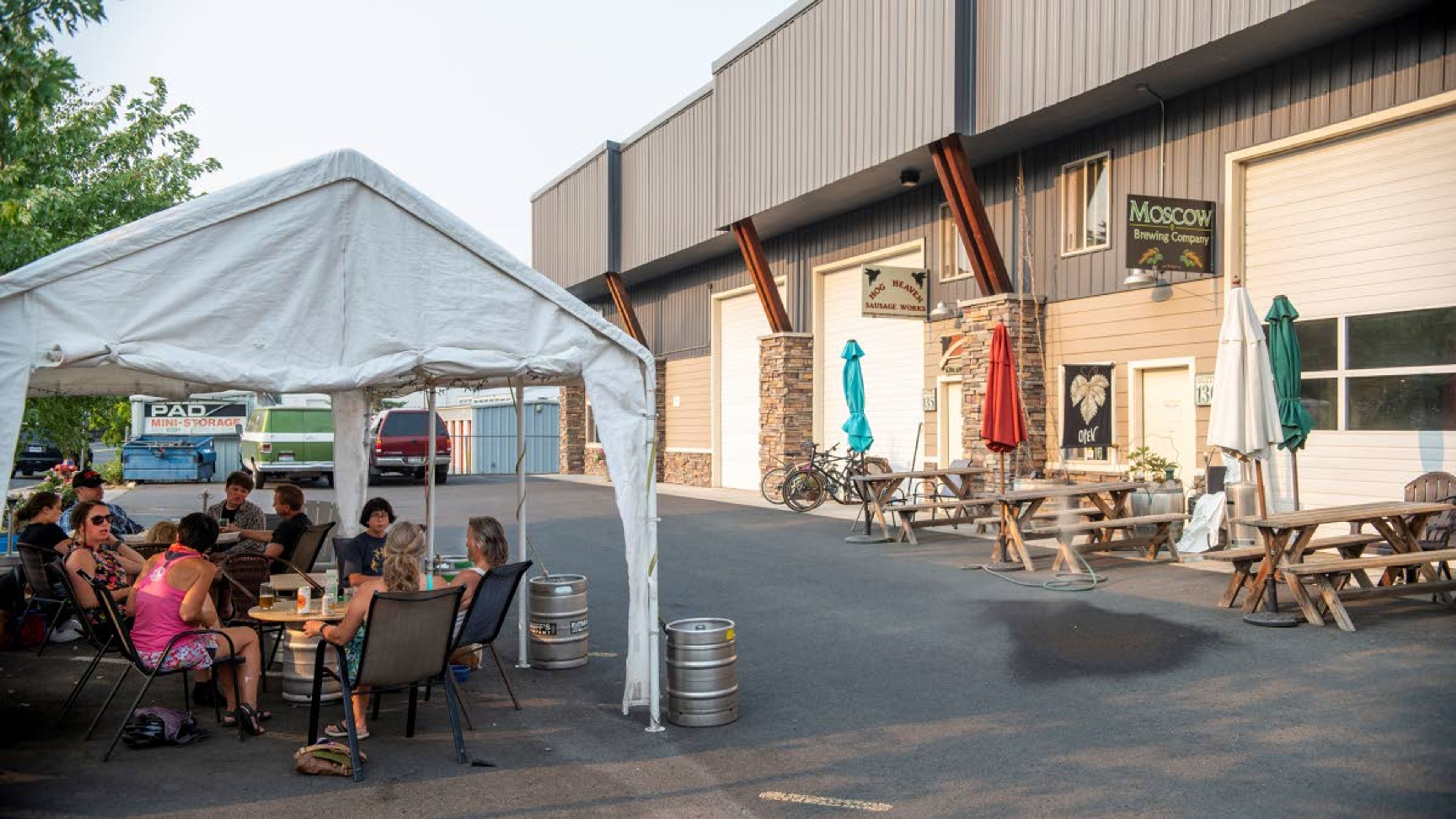Suds and tastebuds
WSU researchers: Amateurs show surprising skill when identifying beer barleys
Drinkers of craft beer were shown to be surprisingly skilled at sorting out the unique flavor contributions barley brings to the final product in a recent study that brought together expertise of Washington State University scientists and a local brewery.
WSU doctoral researcher Evan Craine said her team partnered with Moscow Brewing Company co-owner Aaron Hart to produce experimental beers that allowed the malted barley in the mix to really shine. The recipe for each of the five beers tasted by test subjects was identical with the exception of the variety of malted barley used in the brewing process.
They then invited amateur tasters who were experienced drinkers of craft beer to come in and rate them in terms of appearance, aroma, taste and flavor, sweetness, bitterness and overall liking. They were also given an array of flavor descriptors to choose from that applied to each beer. To their surprise, these amateurs were skilled at perceiving and describing the difference between the different malted barleys.
“I think we really tapped into a valuable resource, which is these untrained consumers that drink craft beer regularly — they are opinionated, they have preferences,” Craine said. “They’re a really great tool to do this work because they can just come in and give us great data — really nuanced interpretations of what they’re tasting.”
While it is an essential part of any beer recipe, Craine said the flavor contribution of malted barley often goes underappreciated in the beer-drinking world. He said researchers produced five beers for tasters to try — each was identical with the exception of the barley used. Four were barley breeding lines developed by WSU and another was a widely grown variety called Copeland that was used as a control.
Craine said not only did people indicate they preferred the breeding varieties across the board -— they were also able to tease out unique characteristics of each.
He said this is particularly encouraging for breeders as it could provide them with a new way to market their barley varieties to beer makers.
“You can have people come in and evaluate them. If they like them, they’ll tell you why they like them — certain flavors that they perceived in them,” Craine said. “It could be a really nice way for a breeder to generate some data from a public audience on which ones they prefer and why.”
Hart said the findings have similar implications for brewers. In addition to highlighting a new, useful metric for evaluating brews, he said it also helped to showcase the life and story behind the ingredient before it became beer.
“Being on the ground floor and getting to get people’s sort of raw data from whether or not they like the beer, or what flavors, they were perceiving or experiencing more, definitely has helped me in honing in flavors that I might want to express,” Hart said. “Then also just understanding the story of barley … there’s really only four ingredients in beer and to not necessarily fully understand one leaves you to not have as complete of a beer as you possibly could.”
While they were great at tasting the differences in a finished beer, Craine said amateur tasters were found to be less insightful when it came to tasting samples of “hot steep.” Analogous to wort, hot steep is the sweet, unfermented liquid created early in the beer making process by combining hot water with malted barley. With the addition of yeast and a few weeks or months to ferment, hot steep would become beer, but being able to use this early, pre-beer product in taste evaluations could help brewers and barley growers to identify pleasing characteristics more quickly than if they went through the entire brewing process.
The untrained tasters were not particularly skilled at identifying unique characteristics of the hot steep samples nor did they show particularly strong preferences between each. He said this is probably partially due to their unfamiliarity with the product.
“When they drink beer … they can draw on those collective memories of what they’ve experienced before and that can help them to not only perceive, but more importantly, report what it is that they’re tasting,” Craine said. “For the hot steep, that’s something that I would say (for) 95 percent of the people that participated in this study, it was the first time they’d ever tasted anything like that.”
Jackson can be reached at (208) 883-4636, or by email to sjackson@dnews.com.
